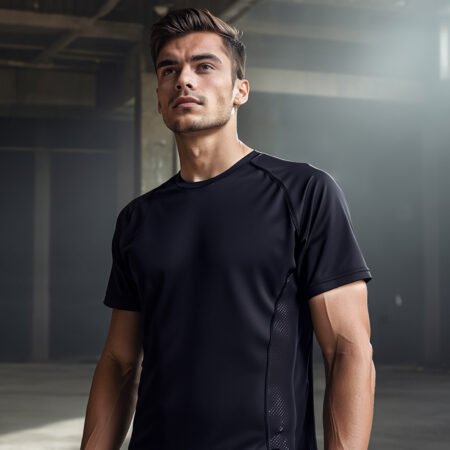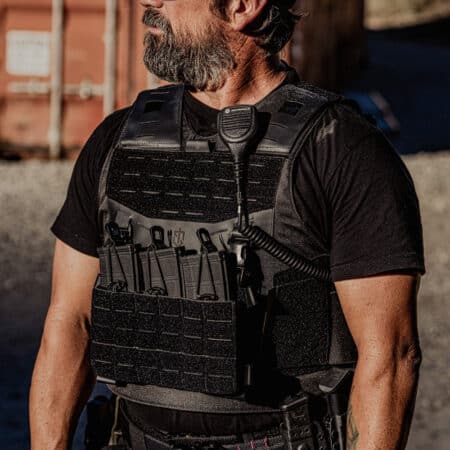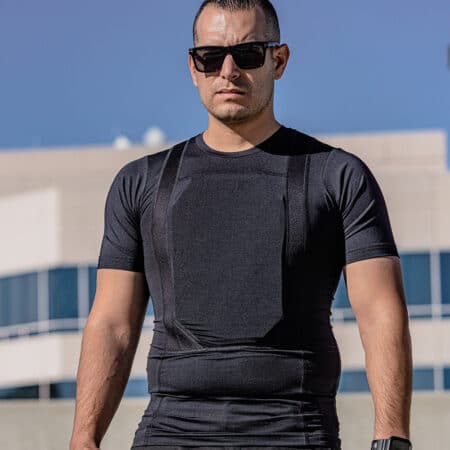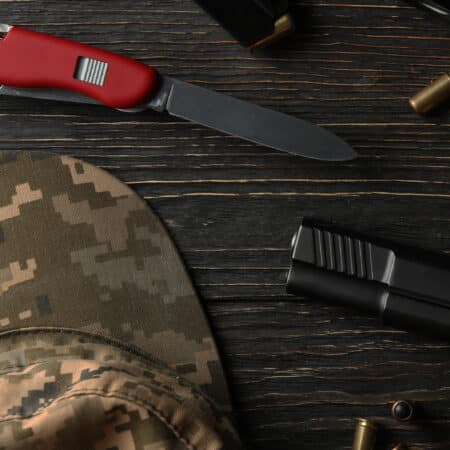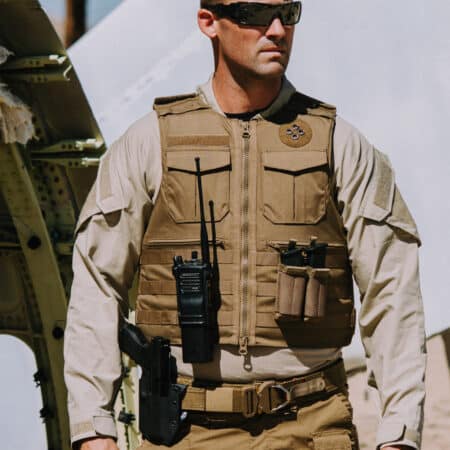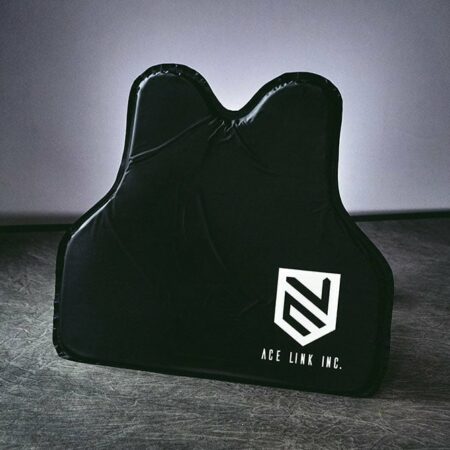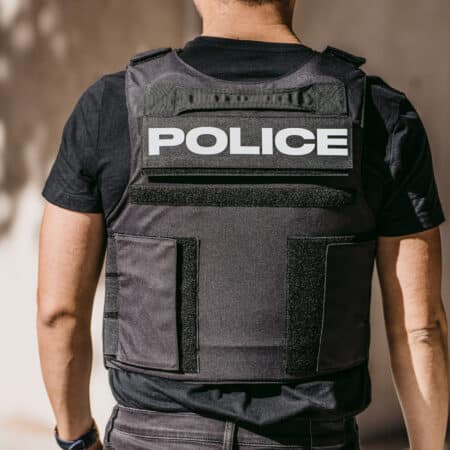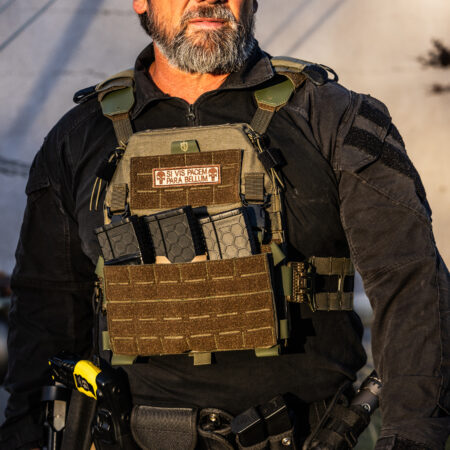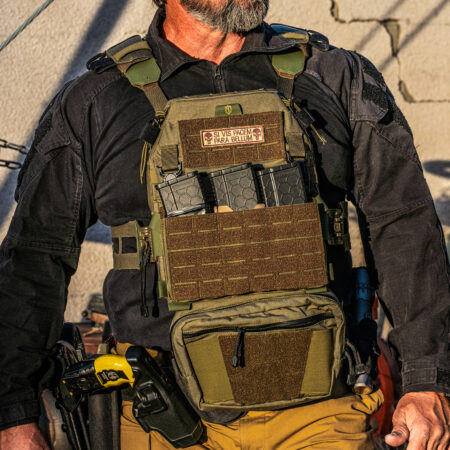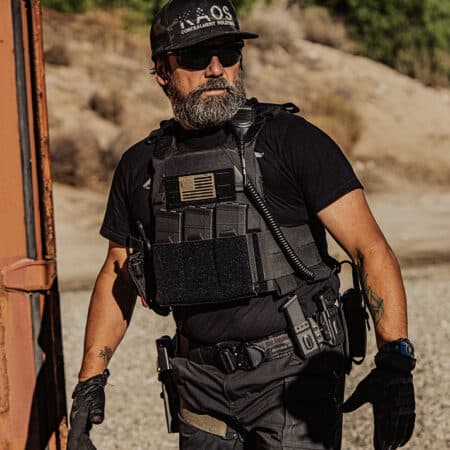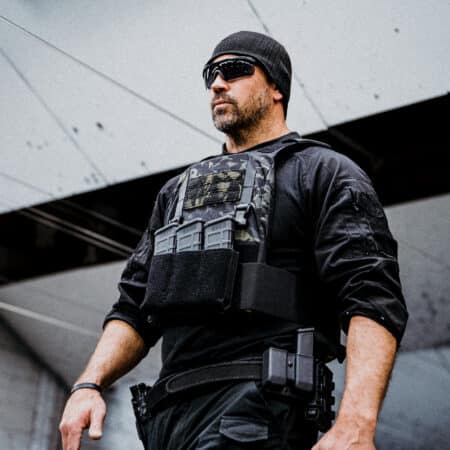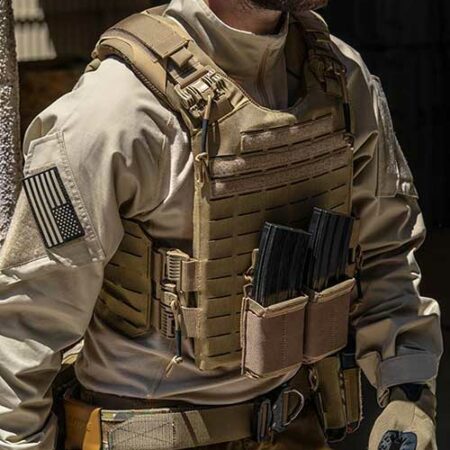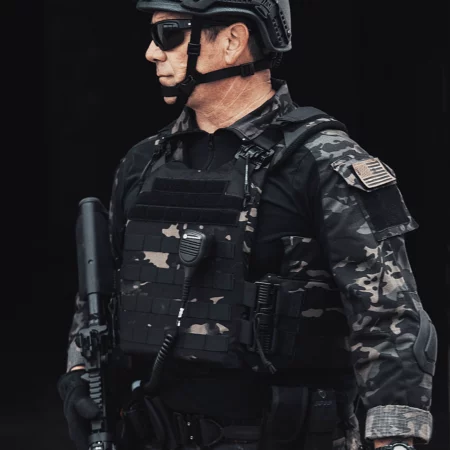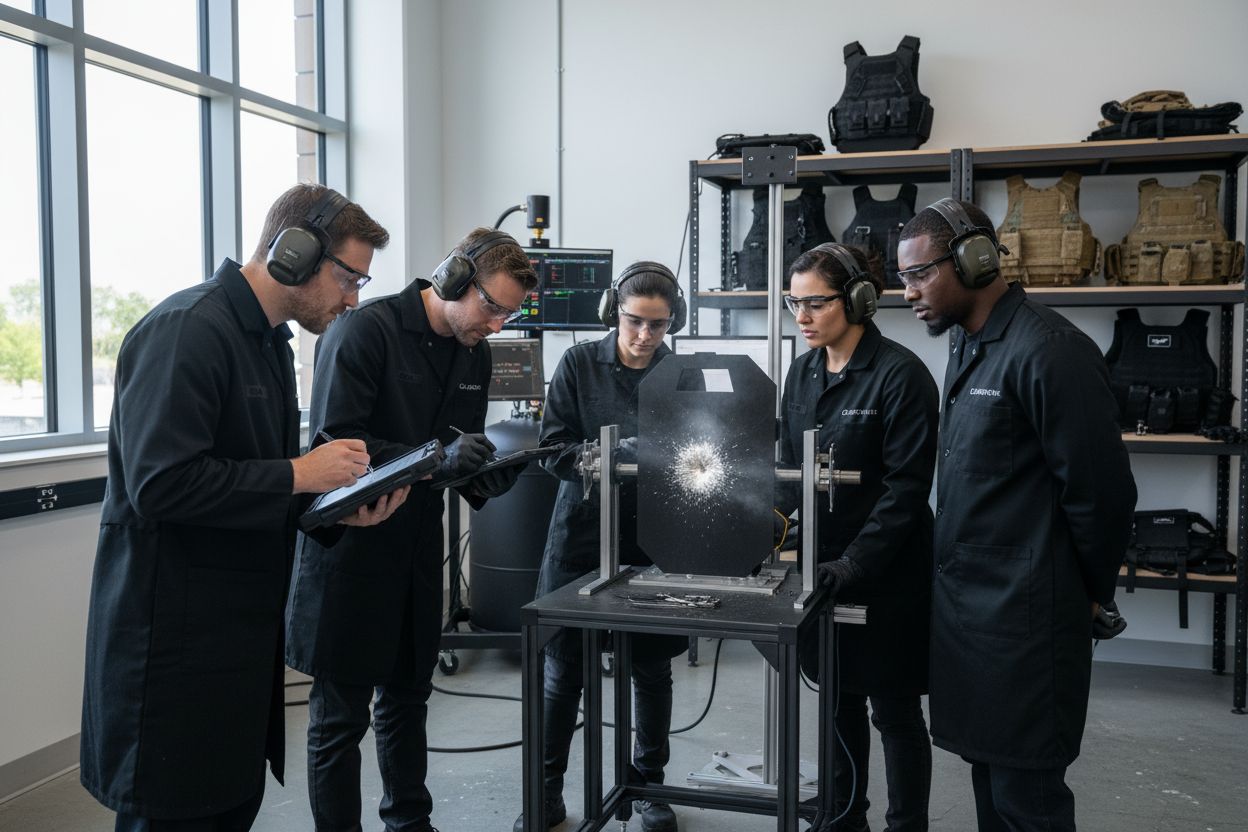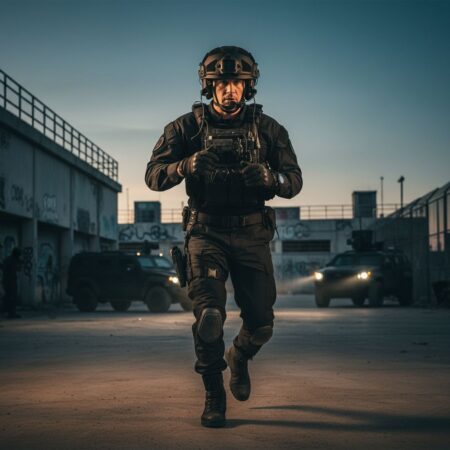- Table of Contents
- Quick Summary
- 1: Understanding V-50 Testing: What Is It?
- 2: The Importance of Body Armor Fragments Protection
- 3: How V-50 Values Indicate Fragment Protection
- 4: The V-50 Fragment Protection Testing Explained
- 5: Interpreting V-50 Results: What They Mean for You
- 6: Selecting Body Armor Based on Fragment Protection Ratings
- 7: Future Trends in V-50 Testing and Body Armor Technology
- Turn V-50 Testing Insights Into Real-World Protection With Acelink Armor
- Frequently Asked Questions
- Recommended
V-50 testing has completely changed how we measure body armor effectiveness in the aspect of fragment protection. Most people think armor either stops bullets or it does not, but the real story is much more interesting. V-50 testing measures the exact velocity where there is a 50 percent chance of a projectile breaking through armor, revealing entirely new insights the old pass or fail tests miss.
Table of Contents
- Understanding V-50 Testing: What Is It?
- The Importance of Body Armor Testing Standards
- How V-50 Values Indicate Armor Performance
- The V-50 Testing Process Explained
- Interpreting V-50 Results: What They Mean for You
- Selecting Body Armor Based on V-50 Ratings
- Future Trends in V-50 Testing and Body Armor Technology
Quick Summary
| Takeaway | Explanation |
|---|---|
| V-50 testing measures armor penetration likelihood | It determines the velocity at which a projectile has a 50% chance of penetrating the body armor. |
| Body armor testing standards establish safety criteria | These standards create consistent, measurable criteria for assessing protective equipment’s effectiveness and durability. |
| Understanding V-50 values aids armor selection | V-50 ratings help users make informed choices by providing detailed insights into the performance boundaries of their protective gear. |
| Future trends include advanced materials and smart tech | Emerging technologies will enhance body armor with features like adaptable protection and artificial intelligence for performance monitoring. |
| Interpreting V-50 results is crucial for safety strategies | Recognizing V-50 metrics allows professionals to make better decisions about their personal safety and equipment reliability. |
1: Understanding V-50 Testing: What Is It?
V-50 testing represents a sophisticated and critical scientific method for evaluating the performance and protective capabilities of body armor. This specialized ballistic assessment provides a comprehensive statistical approach to understanding how different protective materials respond under specific projectile impact conditions.
At its core, the V-50 Ballistic Limit Test measures the velocity at which a projectile has a 50% probability of penetrating body armor, so you can say it measures the fragments’ protection. Unlike traditional pass/fail ballistic tests, this method offers nuanced insights into armor performance by establishing a precise statistical threshold for material resistance. Researchers systematically fire projectiles at progressively increasing velocities, meticulously documenting the point where penetration becomes statistically probable.
Key aspects of V-50 testing include:
- Determining the precise velocity threshold for potential armor penetration
- Providing statistically robust data on material performance
- Enabling comparative analysis between different armor materials and designs
- Offering manufacturers critical feedback for product improvement
The scientific rigor of V-50 testing makes it an invaluable tool for safety professionals, military personnel, and body armor manufacturers. By generating detailed velocity-based performance metrics, this testing methodology goes beyond simple binary assessments. According to Ballistic Research Laboratory, the V-50 test creates a comprehensive probabilistic profile of armor effectiveness, revealing intricate details about material response under various impact scenarios.
Practically speaking, V-50 fragments protection testing helps stakeholders make informed decisions about protective gear. Whether developing new body armor for law enforcement, evaluating existing protective equipment, or understanding material limitations, this testing method provides crucial empirical data. The test’s ability to generate statistically significant results means that manufacturers can refine designs, and end-users can select equipment with a deeper understanding of its real-world protective capabilities.
Ultimately, V-50 testing represents more than just a technical evaluation—it is a critical bridge between scientific measurement and practical personal safety, transforming complex ballistic performance data into actionable insights for protecting human life.
2: The Importance of Body Armor Fragments Protection
Body armor testing standards against fragment protection are the backbone of personal protection technology, ensuring that protective equipment meets rigorous performance criteria designed to safeguard human life. These standards represent a complex framework of scientific protocols and methodological assessments that transform raw materials into reliable defensive systems.

The primary objective of body armor testing standards is to establish consistent, measurable criteria for protective performance. These comprehensive evaluation processes go far beyond simple impact resistance, examining multiple dimensions of material capability and structural integrity. By implementing stringent testing protocols, manufacturers can systematically validate the protective capacities of their body armor designs.
Key considerations in body armor testing standards include:
- Establishing precise velocity and energy absorption thresholds
- Evaluating material performance under diverse environmental conditions
- Assessing long-term durability and structural resilience
- Ensuring consistent quality across manufacturing batches
According to National Institute of Justice Standards, these standards provide critical guidance for law enforcement, military, and civilian protective equipment. The testing framework encompasses multiple evaluation dimensions, including penetration resistance, back-face deformation, and material degradation potential.
For professionals and consumers alike, understanding these standards becomes crucial. Learn more about selecting the right body armor to ensure maximum protection and reliability. The standards serve as a universal language of safety, translating complex technical specifications into comprehensible performance metrics that directly impact human survival.
The evolution of body armor testing standards represents an ongoing commitment to technological innovation and human protection. By continuously refining evaluation methodologies, researchers and manufacturers can develop increasingly sophisticated protective solutions that adapt to emerging threats and environmental challenges. These standards are not merely technical specifications but a testament to our collective dedication to preserving human life in high-risk environments.
3: How V-50 Values Indicate Fragment Protection
V-50 values serve as a sophisticated metric for evaluating the intricate performance characteristics of body armor, offering far more nuanced insights than traditional pass/fail testing methodologies. These statistical measurements provide a probabilistic understanding of armor effectiveness by precisely quantifying the velocity at which projectiles have an equal chance of penetrating or being stopped by protective materials.
In practice, the V-50 value represents a critical threshold where projectile penetration becomes statistically probable. This means that at the specified velocity, a projectile has a 50% likelihood of breaching the armor’s protective barrier. Professional researchers and manufacturers use this metric to develop increasingly robust protective solutions that can withstand diverse ballistic threats.
Key performance indicators revealed through V-50 fragments protection testing include:
- The exact velocity threshold for potential armor penetration
- Statistical probability of projectile penetration at different impact velocities
- Comparative analysis of material resistance and durability
According to Ballistic Research Laboratory, these values offer unprecedented granularity in understanding armor performance. By generating detailed probabilistic profiles, manufacturers can make informed design decisions that directly impact protective capabilities.
Understanding the nuances of body armor fit and coverage becomes crucial when interpreting V-50 values when speaking about fragment protection. The test results do not just represent raw numbers but provide a comprehensive view of how different materials and designs respond under specific impact conditions.
Professional users, from law enforcement to military personnel, rely on V-50 values to make critical equipment selections. These metrics transform abstract technical data into actionable insights about protective gear reliability. By establishing a clear statistical framework, V-50 testing bridges the gap between scientific measurement and practical safety requirements.
Ultimately, V-50 values represent more than just technical specifications. They embody a sophisticated approach to understanding and mitigating ballistic risks, providing a robust scientific foundation for developing life-saving protective technologies.
4: The V-50 Fragment Protection Testing Explained
The V-50 testing process represents a meticulously designed scientific protocol for evaluating the ballistic performance of protective materials. This sophisticated methodology goes far beyond simple impact testing, providing a statistically robust framework for understanding armor effectiveness under controlled experimental conditions.
Precision is paramount in the V-50 fragment protection testing approach. Researchers systematically expose body armor samples to projectiles fired at progressively increasing velocities, carefully documenting each interaction to establish a comprehensive performance profile. The goal is to determine the exact velocity point where projectile penetration becomes statistically probable.
Key steps in the V-50 testing process include:
- Preparing standardized armor sample specimens
- Calibrating specialized ballistic testing equipment
- Systematically increasing projectile velocities
- Recording penetration and non-penetration events
According to National Institute of Justice Ballistic Testing Standards, the testing procedure demands extraordinary attention to detail. Multiple armor samples are subjected to controlled ballistic impacts, with researchers tracking the precise moment where penetration probability reaches exactly 50%.
Understand the critical features that define an ideal bulletproof vest to appreciate the complexity of this testing process. The V-50 methodology requires specialized equipment including high-precision chronographs, ballistic testing frames, and advanced data collection systems that can capture microsecond-level interactions between projectiles and protective materials.
The statistical analysis involved in V-50 testing transforms raw impact data into meaningful performance metrics. By generating probabilistic models, researchers can predict armor behavior under various threat scenarios, providing critical insights for manufacturers and end-users alike.
Ultimately, the V-50 testing process represents a sophisticated intersection of physics, statistics, and materials science. It provides an unparalleled window into the complex dynamics of protective technology, offering a scientifically rigorous approach to understanding how body armor performs under real-world threat conditions.
5: Interpreting V-50 Results: What They Mean for You
Interpreting V-50 testing results requires a nuanced understanding of statistical performance metrics and their real-world implications for personal protection. These complex measurements translate scientific data into actionable insights about body armor effectiveness, providing professionals and civilians with critical information about their protective equipment’s capabilities.
V-50 results offer more than simple pass/fail assessments. They provide a sophisticated probabilistic profile that reveals the precise velocity threshold where protective materials become vulnerable. This means understanding not just whether armor works, but exactly under what specific conditions it might fail.
Key considerations when interpreting V-50 results include:
- Recognizing the 50% penetration probability threshold
- Understanding velocity-based performance limitations
- Evaluating armor’s protective capabilities across different threat scenarios
According to National Institute of Justice Ballistic Research, these results help users make informed decisions about personal protection strategies. The data goes beyond theoretical scenarios, providing empirical evidence about armor performance under controlled conditions.
Learn more about measurement, fit, and coverage of body armor to complement your understanding of V-50 test results. Professional users must recognize that these metrics represent probabilistic assessments, not absolute guarantees of protection.
For law enforcement, military personnel, and security professionals, V-50 results offer critical insights into equipment selection and risk management. By understanding the precise performance boundaries of protective gear, users can make more strategic decisions about their personal safety equipment.
Ultimately, V-50 testing results transform abstract scientific data into practical knowledge. They provide a transparent, statistically rigorous framework for understanding the complex relationship between protective materials and potential ballistic threats, empowering users to make informed choices about their personal safety strategies.
6: Selecting Body Armor Based on Fragment Protection Ratings
Selecting body armor is a critical decision that demands careful consideration of V-50 ratings, transforming scientific metrics into practical personal protection strategies. These ratings provide a nuanced performance profile that goes far beyond traditional protection level classifications, offering users a sophisticated understanding of their armor’s ballistic capabilities.
V-50 ratings serve as a precise scientific indicator of armor performance, revealing the exact velocity threshold where protective materials become statistically vulnerable. This means users can make more informed decisions about their personal safety equipment, understanding not just basic protection levels but the specific performance boundaries of their chosen gear.
Critical factors to consider when selecting body armor based on V-50 ratings include:
- Matching V-50 ratings to anticipated threat environments
- Comparing performance metrics across different material technologies
- Evaluating long-term durability and consistent protective capabilities
According to National Institute of Justice Ballistic Standards, professional users should view V-50 ratings as dynamic performance indicators rather than absolute guarantees. These metrics provide a statistically robust framework for understanding protective equipment’s real-world effectiveness.
Learn more about the main criteria for choosing the best body armor to complement your understanding of V-50 ratings. Professional users must recognize that these metrics represent probabilistic assessments tailored to specific threat scenarios.
For law enforcement, military personnel, and security professionals, V-50 ratings offer an unprecedented level of transparency in equipment selection. By understanding the precise performance boundaries of protective materials, users can develop more strategic approaches to personal safety and risk management.
Ultimately, selecting body armor based on V-50 ratings represents a sophisticated approach to personal protection. These ratings transform complex scientific data into actionable insights, empowering users to make evidence-based decisions about their defensive equipment.
7: Future Trends in V-50 Testing and Body Armor Technology
The landscape of body armor technology is rapidly evolving, with emerging innovations pushing the boundaries of traditional V-50 testing methodologies. Advanced materials and sophisticated testing protocols are transforming how we understand and measure protective capabilities, creating unprecedented opportunities for more effective personal safety solutions.
Cutting-edge research is focusing on developing materials that provide superior ballistic protection while maintaining lightweight and flexible characteristics. Nanotechnology, graphene composites, and advanced synthetic polymers are revolutionizing the approach to body armor design, challenging existing testing frameworks and expanding our understanding of material performance.
Key emerging trends in V-50 testing and body armor technology include:
- Integration of artificial intelligence for predictive performance modeling
- Development of smart materials with adaptive protective capabilities
- Enhanced environmental simulation in testing protocols
According to Defense Advanced Research Projects Agency (DARPA) Research, future body armor technologies will likely incorporate multi-functional capabilities beyond traditional ballistic protection and fragment protection. These advanced systems may include integrated sensors, adaptive thermal regulation, and real-time performance monitoring.
Explore the latest developments in body armor cooling technology to understand how innovation is transforming personal protective equipment. The future of fragment protection lies in creating more comprehensive, dynamic evaluation methods that can capture the complexity of modern protective materials.
Emergent technologies are pushing the boundaries of what was previously considered possible. Researchers are exploring quantum-level material engineering, developing armor systems that can dynamically respond to different threat scenarios. This represents a paradigm shift from static protection to adaptive, intelligent defensive technologies.
Ultimately, the future of V-50 fragment protection testing and body armor technology represents a convergence of materials science, computational modeling, and advanced engineering. As our understanding of protection mechanisms continues to evolve, we can expect increasingly sophisticated approaches to measuring and enhancing personal safety technologies.
The table below provides a comprehensive summary of the key insights, major steps, and core outcomes discussed throughout the article on V-50 testing and its role in measuring body armor effectiveness.
| Topic | Key Point | Practical Benefit/Outcome |
|---|---|---|
| V-50 Testing Defined | Measures the velocity at which a projectile has a 50% chance of penetrating body armor | Offers deeper performance insights compared to pass/fail tests |
| Importance of Standards | Body armor testing standards establish measurable safety and performance criteria | Ensures product consistency, reliability, and user protection |
| Interpreting V-50 Values | V-50 values provide probabilistic data on penetration risk at precise velocities | Enables informed equipment selection and better decision-making |
| V-50 Testing Process | Involves firing projectiles at increasing speeds to record the threshold of penetration | Produces statistically robust and comparable armor performance |
| Application in Armor Selection | V-50 ratings help match protective gear to specific threat scenarios and user needs | Users can select the most appropriate armor for their risk levels |
| Evolving Trends in Technology | Advanced materials, smart tech, and adaptive solutions are shaping the future | Improved protection, comfort, and performance monitoring |
| Real-World Implications | V-50 results turn scientific metrics into actionable safety strategies | Professionals and civilians gain clarity on actual protection |
Turn V-50 Testing Insights Into Real-World Protection With Acelink Armor
After learning how V-50 testing sets the standard for fragment protection and ballistic protection and highlights the importance of true performance metrics, you know that not all body armor offers the same level of defense or durability. When your safety depends on understanding where material strength and reliability truly begin and end, it is critical to select equipment that is scientifically tested and built for decisive moments.
At AcelinkArmor.com, you will find personal safety gear designed with the same rigorous standards and attention to detail discussed in this article. Our wide range of bulletproof vests, armor plates, and tactical equipment meets high protection benchmarks such as Level IV and IIIA compliance, so you can trust your gear in real situations. Do not settle for untested promises. Choose protection that is engineered for statistical certainty. Visit AcelinkArmor.com now and upgrade to body armor solutions that are trusted by law enforcement and security experts across the country.
Frequently Asked Questions
What is V-50 testing and why is it important?
V-50 testing is a scientific method for evaluating the performance of body armor, measuring the velocity at which a projectile has a 50% chance of penetrating the material. This testing provides critical insights into the protective capabilities of armor, helping to improve safety standards and equipment effectiveness.
How does V-50 testing differ from traditional ballistic assessments?
Unlike traditional pass/fail tests, V-50 testing offers a statistical approach to understanding armor performance by establishing a precise threshold for material resistance. It generates probabilistic data on armor effectiveness rather than binary results.
What factors should I consider when interpreting V-50 results?
When interpreting V-50 results, it’s important to recognize that they indicate a 50% probability of penetration at certain velocities, evaluate the armor’s capabilities across different threat scenarios, and understand that these results are probabilistic, not absolute guarantees of protection.
How can V-50 ratings influence my body armor selection?
V-50 ratings provide a detailed understanding of the ballistic capabilities of body armor. By matching these ratings to anticipated threat levels, evaluating long-term durability, and comparing materials, users can make informed decisions about their protective equipment.
Recommended
- Signs That It’s Time to Replace Your Ballistic Panels – Ace Link Armor
- How to Choose Bulletproof Helmet for Optimal Protection – Ace Link Armor
- Understanding Blunt Force Trauma in a Bulletproof Vest – Ace Link Armor
- Body armor heat management – Why Heat Is the Hidden Enemy – Ace Link Armor



